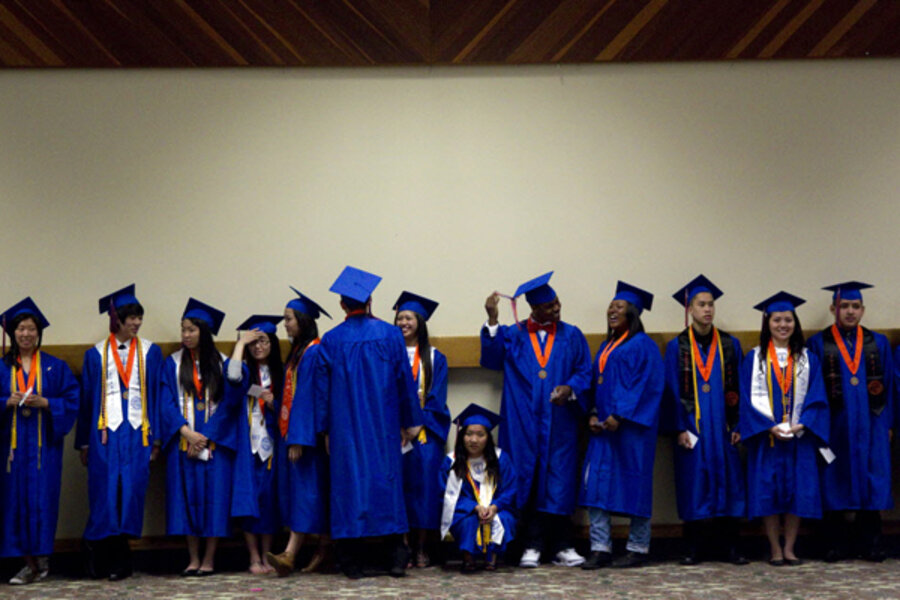US high school graduation rate inches past 75 percent
Loading...
The United States is slowly making progress on high school graduation rates, according to a report released Monday by several education organizations.
But about 1 out of 4 students – and 40 percent of minorities – still fail to graduate in four years.
Between 2002 and 2009, the nation’s graduation rate rose by 3.5 percent, from 72 percent to just over 75 percent, according to the annual Building a Grad Nation report.
“The good news is that some states have made improvements in their graduation rates, showing it can be done. But the data also indicate that if we are to meet our national goals by 2020, we will have to accelerate our rate of progress, particularly in the states that have shown little progress,” said Robert Balfanz, co-director of the Everyone Graduates Center, Johns Hopkins University, in a statement.
The report shows that progress varies significantly by state: Twelve states accounted for the majority of gains between 2002 and 2009, while 10 states had lower graduation rates in 2009 than in 2002.
The states earning the biggest accolades are Tennessee and New York – the only two states to post double-digit increases since 2002, when the research began. Tennessee’s graduation rate has increased by 18 percent and New York’s by 12 percent.
The other states with major gains are Alabama, Florida, Georgia, Kentucky, Massachusetts, Missouri, North Carolina, South Carolina, Texas, and Wisconsin.
The 10 states whose graduation rates have worsened in that period are Arizona, Arkansas, California, Connecticut, Nebraska, Nevada, New Jersey, New Mexico, Rhode Island, and Utah.
Nevada, in particular, stands out as a laggard: The state’s graduation rate declined by 15.6 percent between 2002 and 2009, more than triple the decline in any other state.
The Grad Nation campaign was launched in 2010 by the America’s Promise Alliance and is working toward two key goals by 2020: a national graduation rate of 90 percent and a college graduation rate of 60 percent (up from 30 percent today).
Monday's report was released by the America’s Promise Alliance, the Everybody Graduates Center, the Alliance for Excellent Education, and Civic Enterprises. Other key findings in the report:
• The number of “dropout factories” – those high schools with a graduation rate of 60 percent or lower – declined between 2002 and 2010, from 1,634 to 1,550, and almost 800,000 fewer students attend such schools. The rate of decline was particularly fast between 2008 and 2010.
• The nation’s graduation rate inched up very slightly, by half a percent, between 2008 and 2009. To hit the campaign’s 90 percent goal, it will need to go up by an average of 1.3 percent a year.
• Wisconsin became the first state to achieve the 90 percent graduation rate, and Vermont is nearly there, with a rate of 89.6 percent.
"This year's report proves struggling schools are not destined to fail," said Education Secretary Arne Duncan. "The reality is that even one dropout factory is too many."






